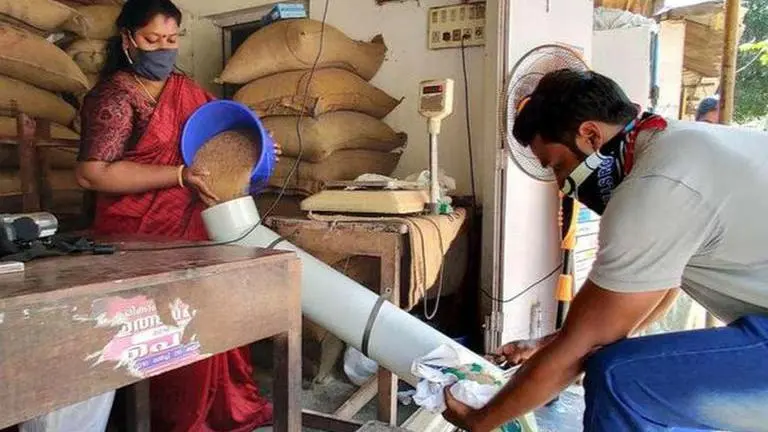Updated 6 April 2022 at 20:33 IST
Extreme poverty in India less than 1% even during COVID due to PMGKAY, same as 2019: IMF
The IMF paper titled ‘Pandemic, Poverty and Inequality: Evidence from India’, said the extreme poverty in the country stayed less than 1% despite the pandemic.
- Economy News
- 3 min read

The International Monetary Fund (IMF) on Tuesday released a paper presenting the estimates of poverty and consumption inequality in India through the pandemic years. According to the IMF paper titled Pandemic, Poverty and Inequality: Evidence from India, authored by Surjit Bhalla, Karan Bhasin and Arvind Virmani, extreme poverty in the country was less than 1 per cent in the pre-pandemic year 2019, and food transfers were instrumental in ensuring that it remained at that low level in the pandemic year 2020. The IMF further noted that the PMGKAY scheme was critical in preventing an increase in extreme poverty levels in the country through the pandemic.
According to the new IMF paper, extreme poverty, which is less than PPP$ 1.9 per person per day in India, was as low as 0.8 per cent in 2019. It noted that it remained at the same level even during the pandemic year 2020. The report noted that the low level of extreme poverty in two consecutive years, including the pandemic year, could be considered the elimination of extreme poverty.
PMGKAY scheme played a major role in lowering extreme poverty: IMF
The paper further noted that the post-food subsidy inequality at .294 was also very close to its lowest level of 0.284 observed in 1993/94. The positive growth in terms of eradicating extreme poverty was achieved by several factors as mentioned by the IMF report. The paper noted the Pradhan Mantri Garib Kalyan Anna Yojana (PMGKAY) scheme that supplies free food grains to migrants and the poor as a major factor.
“PMGKAY was critical in preventing any increase in extreme poverty levels in India and the doubling of food entitlements worked substantially in terms of absorbing the COVID – 19 induced income shocks on the poor,” the IMF paper noted. Furthermore, the report added that the pandemic shock, that took a toll on the economy, was largely a temporary income shock. It said that the temporary fiscal policy interventions were the fiscally appropriate way to absorb a large part of the shock.
Furthermore, the IMF also noted that the consumption growth was also higher in the years leading up to the pandemic than before it. “Consumption growth (an important determinant of poverty) was found to be higher in 2014-19 than the robust growth observed 2004-2011,” the paper read. Meanwhile, it also examined in detail, the plausibility of the results contained in the NSS consumer expenditure survey of 2017-18 and concluded that the survey was not of quality useful for any analysis.
Advertisement
[New Paper]
— Surjit Bhalla (@surjitbhalla) April 6, 2022
"Pandemic, Poverty, and Inequality: Evidence from India" with @dravirmani and @karanbhasin95
We look at poverty & inequality estimates for India and here are a few big takeaways -
1/nhttps://t.co/LCC9skn3Cf#EconTwitter
IMF lauds India’s food subsidy program
In concluding the ‘Pandemic, Poverty and Inequality: Evidence from India’ paper, the IMF said that the results demonstrated the social safety net provided by the expansion of India’s food subsidy program. It claimed that the program absorbed a major part of the pandemic shock to the Indian economy by providing insurance to the poor and prevented an increase in the prevalence of extreme poverty in India. “This illustrates the robustness of India’s social safety architecture as it withstood one of the world’s biggest exogenous income shocks,” the paper noted in its ending remarks.
Image: ANI
Published By : Vishnu V V
Published On: 6 April 2022 at 10:09 IST
